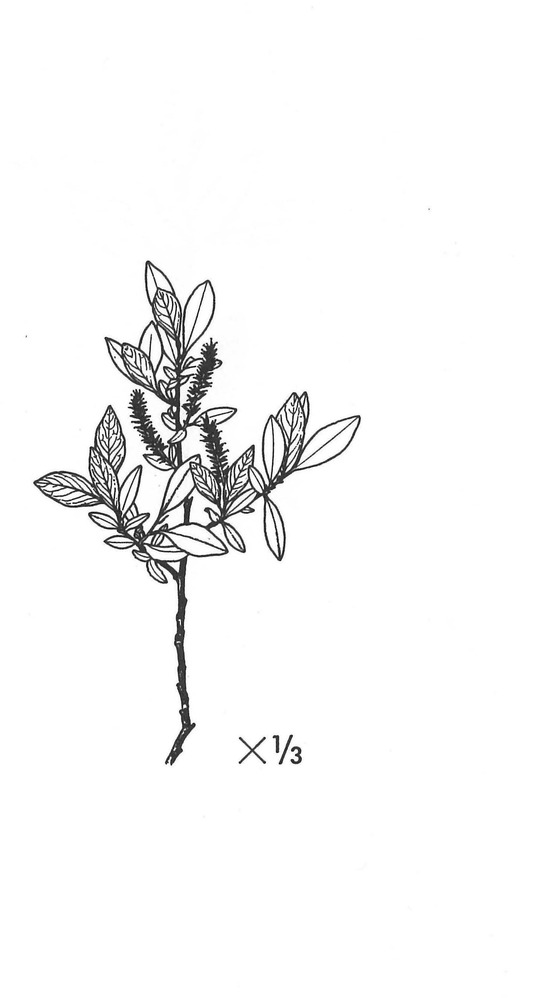| Salix hastata L. | |||
| |||
| Family | Salicaceae — APG family: Salicaceae | ||
| Synonyms | Salix farrae var. walpolei Cov. & Ball, Salix walpolei (Cov. & Ball) Ball. | ||
| Description | Shrub up to 2 meters tall, usually lower; young twigs reddish-brown, pubescent, glabrescent in age; stipules reniform, serrated; leaves thin, glabrous, ovate, oblong, or elliptical, sharply serrated, paler below, in alpine forms small, lanceolate, and nearly entire, lacking stipules; catkins reddish-brown on short, leafy peduncles; bracts oblong, blunt or acute, light brown with white wavy hairs; capsules green or brownish-green, glabrous, acute, short-pedicellated, with short, green style; stamens 2; filaments glabrous. | ||
| Ecology | Woods, river bars, reaching up to alpine region and onto tundra. Described from Lapland, Switzerland. | ||
| Taxonomy notes | Specimens with nearly entire leaf margin have been called var. subintegrifolia Flod. [subsp. subintegrifolia (Flod.) Flod.]; subalpine specimens with narrow leaves and small stipules, var. subalpina Anderss.; and those lacking stipules, var. alpéstris Anderss. S. hastata hybridizes with several other species. Broken line on circumpolar map indicates range of var. Farrae (Ball) Hult. (S. Farrae Ball). |
This is a digital representation of Eric Hultén’s ‘Flora of Alaska and Neighboring Territories: A Manual of the Vascular Plants’, which was published by Stanford University Press in 1968. The book was digitized by C. Webb (at UAMN) as part of the Flora of Alaska project, with funding by the US NSF (Grant 1759964 to Ickert-Bond & Webb), and with permission of Stanford University Press. Data and images © 1968 Board of Trustees of the Leland Stanford Jr. Univ. Usage licence: Creative Commons BY-NC-SA 4.0. NB: You may find OCR errors; please refer to the hard-copy if in doubt.
